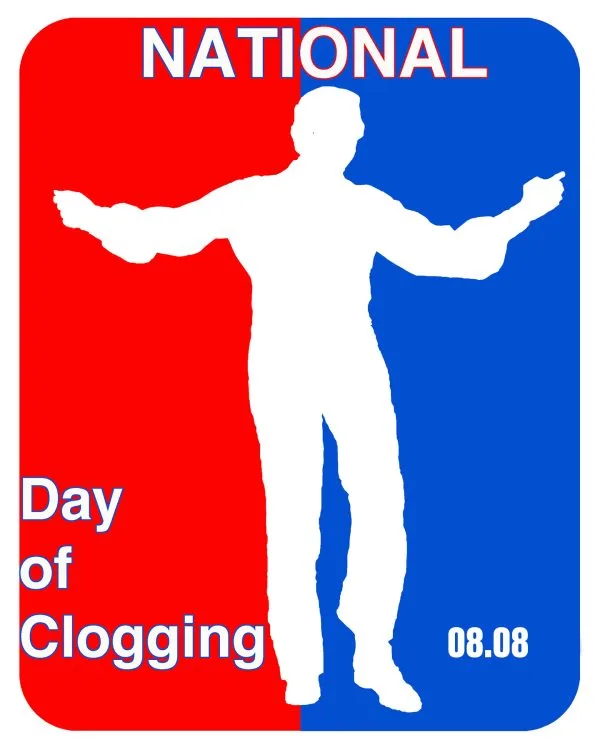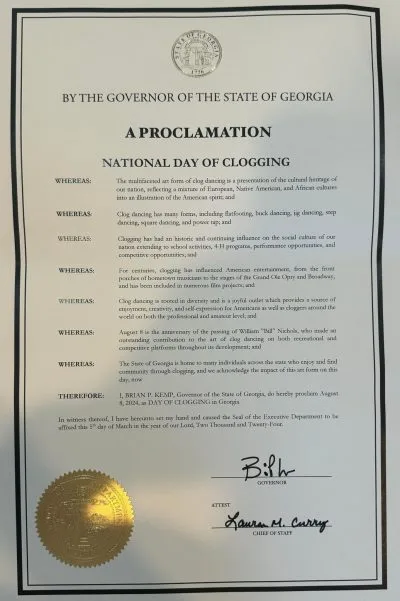History of the Clog Dance
Percussive dance forms exist in various cultures around the world.
Clog dancing, one percussive dance form has a long history with roots that can be traced back several centuries. Its origins are often associated with various English, Irish, German, Scottish, and Welsh cultures. The term “clog dancing” itself refers to a style of dance where the dancer’s footwear, traditionally wooden clogs, creates rhythmic sounds as they strike the ground. Currently, Competitive and recreational dancers wear metal taps on their shoes to mimic the sound of the wooden clog.
This dance form has evolved, incorporating influences from different regions and styles, and continues to be practiced and celebrated today. Originating in the Appalachian region of the United States, it also incorporates elements of Native American and African American dance traditions and is performed and competed for a worldwide audience.
In recent years, there has been a resurgence of interest in folk and traditional dance forms, which has likely contributed to renewed interest and evolution of modern clog dancing as a wholesome slice of “Americana” for the entire family. Clog dancing holds significance within its respective cultural contexts and continues to be enjoyed and celebrated by enthusiasts worldwide as a social outlet and way of connecting with all cultures.

Why is Clog Dancing Popular?
Clog dancing has several aspects that contribute to its popularity:
- Cultural heritage: In regions such as the United Kingdom, Ireland, and parts of the United States, clog dancing is deeply ingrained in the cultural heritage. It’s often passed down through generations and celebrated as a part of local traditions and identity. This cultural significance can drive interest and participation in clog dancing.
- Rhythmic appeal: Clog dancing is characterized by its rhythmic footwork, which produces percussive sounds. This rhythmic appeal can be captivating and enjoyable for dancers and audiences. The combination of movement and sound creates an engaging and dynamic performance experience.
- Community and social aspects: Clog dancing is often practiced within communities or groups, fostering a sense of camaraderie and connection among participants. It allows people to come together, share experiences, and celebrate their shared cultural heritage or love for dance.
- Accessibility: Clog dancing can be practiced by people of all ages and abilities. While mastering the intricate footwork may require time and practice, beginners can still enjoy basic steps and gradually progress to more advanced techniques. This accessibility makes clog dancing appealing to a wide range of individuals.
- Physical and mental benefits: Like other forms of dance, clog dancing offers numerous physical and mental benefits. It provides a cardiovascular workout, improves coordination, enhances balance and flexibility, and can boost mood and self-confidence. Additionally, the focus required to learn and perform clog dancing steps can be mentally stimulating and rewarding.
Overall, the combination of cultural significance, rhythmic appeal, community aspects, accessibility, and health benefits contribute to the popularity of clog dancing among enthusiasts worldwide.
Clog dancing has several aspects that contribute to its popularity:
Cultural heritage: In regions such as the United Kingdom, Ireland, and parts of the United States, clog dancing is deeply ingrained in the cultural heritage. It’s often passed down through generations and celebrated as a part of local traditions and identity. This cultural significance can drive interest and participation in clog dancing.
Rhythmic appeal: Clog dancing is characterized by its rhythmic footwork, which produces percussive sounds. This rhythmic appeal can be captivating and enjoyable for dancers and audiences. The combination of movement and sound creates an engaging and dynamic performance experience.
Community and social aspects: Clog dancing is often practiced within communities or groups, fostering a sense of camaraderie and connection among participants. It allows people to come together, share experiences, and celebrate their shared cultural heritage or love for dance.
Accessibility: Clog dancing can be practiced by people of all ages and abilities. While mastering the intricate footwork may require time and practice, beginners can still enjoy basic steps and gradually progress to more advanced techniques. This accessibility makes clog dancing appealing to a wide range of individuals.
Physical and mental benefits: Like other forms of dance, clog dancing offers numerous physical and mental benefits. It provides a cardiovascular workout, improves coordination, enhances balance and flexibility, and can boost mood and self-confidence. Additionally, the focus required to learn and perform clog dancing steps can be mentally stimulating and rewarding.
Overall, the combination of cultural significance, rhythmic appeal, community aspects, accessibility, and health benefits contribute to the popularity of clog dancing among enthusiasts worldwide.
2024- States
Proclaim the “National Day of Clogging”
2024
States
Proclaim the
“National Day of Clogging”
Clogging Day commemorates Bill Nichols for his dedication to preserving the dance’s heritage while fostering its development and evolution. Revered as the Grandfather of Clogging, he formulated the teaching method and terminology fundamental to the dance. August 8, the anniversary of his passing, serves as both a celebration of his life and an occasion for talented dancers worldwide to spotlight this cherished dance form.
On March 20, 2024, the SC Governor, the SC House of Representatives, and the SC Senate presented a proclamation for the Day of Clogging! On June 2, 2024, the dance hit the Tennessee Capitol.
The celebration continued on July 13, 2024, at the West Virginia Capitol building, July 20, 2024, on the State’s Capitol Steps in Montgomery, Alabama. On July 27, 2024, cloggers performed at Georgia’s state proclamation for the National Day of Clogging!
Our momentum for getting other states to proclaim the National Day of Clogging is growing strong! So far, seven states—Alabama, Arkansas, Georgia, North Carolina, South Carolina, Tennessee, and West Virginia—have declared the importance of this Appalachian dance, and Michigan and Ohio are in the works. With your help, I look forward to getting all 50 states to follow.


